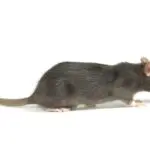How Do Rats Create Tunnels?
Rats create tunnels for a variety of reasons, and learning how they do it can help you deal with them more effectively. Some species of rats build underground pathways and nests, which contain food storage areas and living spaces. These burrows usually have one or two main entrances and several smaller entrances for escape from danger. Some burrows are also occupied by more than one rat, and the burrows can even be long enough to accommodate several generations.
While caving in the burrows will not stop rats from digging back in, stuffing the entrance with steel wool can keep them from coming back. Make sure you pack the steel wool tightly and securely. Another way to block the entryway is to flush it with water to force them out. This will also help you prevent them from digging new holes.
Rats generally dig new burrows during the summer and fall months. The new holes will become increasingly crowded and may have multiple entrances. You can often see new burrows and holes near where you live. These holes can be a couple of inches deep and up to three feet long. Rats often make larger, deeper burrows near structures such as concrete slabs or the foundation of a home.
Rats create tunnels under the ground, and they prefer areas close to food and water. The burrows are usually located under dense vegetation. The entrance is usually 2 to 4 inches in diameter and has smooth walls. Outside the entrance, there will be loose dirt in a fan-like pattern.








